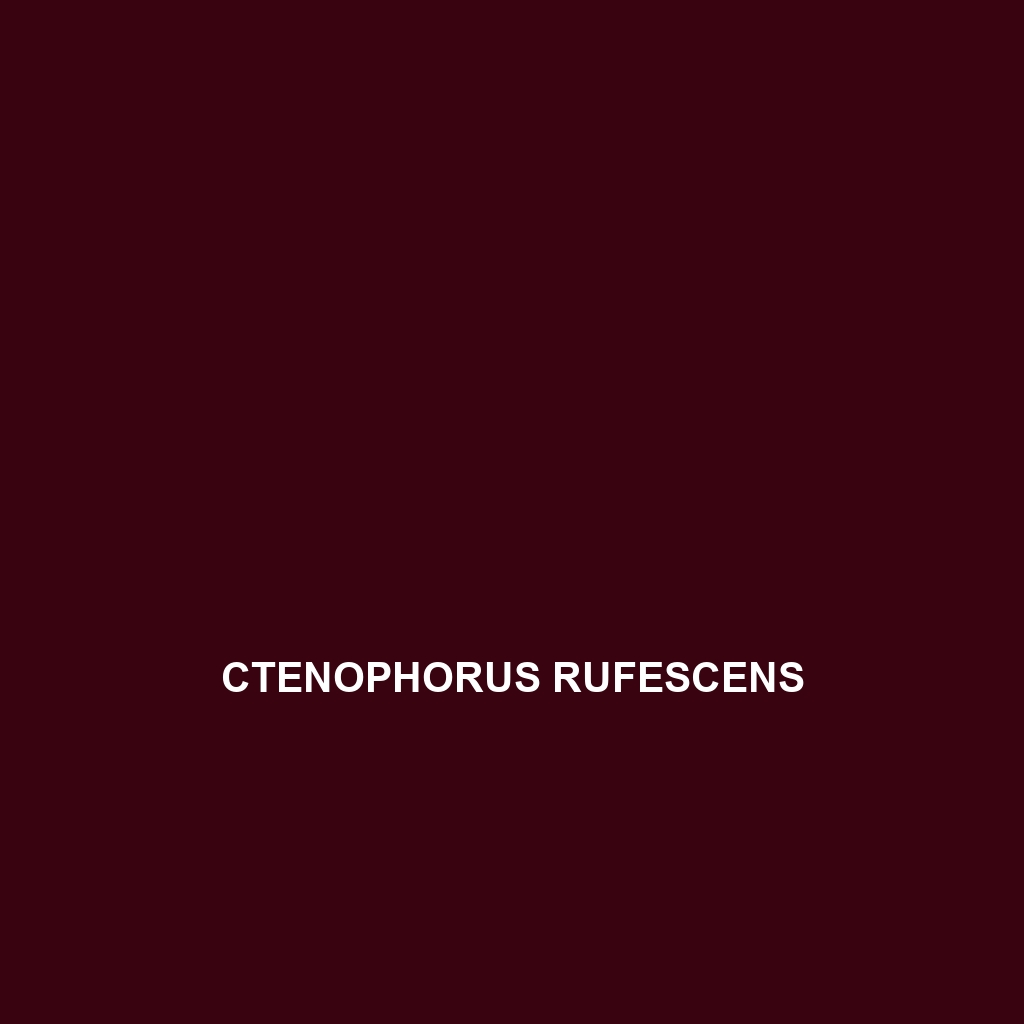Ctenophorus rubens: A Comprehensive Species Description
Common Name: Ctenophorus rubens
Scientific Name: Ctenophorus rubens
Habitat
Ctenophorus rubens is primarily found in the arid and semi-arid regions of Australia, specifically in the central and western parts of the continent. This species thrives in habitats including rocky outcrops, grasslands, and shrublands, where it can avoid the extreme heat and find suitable shelter. The environmental characteristics of its habitat include sparse vegetation and sandy or stony soils, often occurring in areas that provide plenty of sunlight.
Physical Characteristics
Ctenophorus rubens exhibits striking physical attributes that make it easily identifiable. Adults typically measure between 15 to 20 cm in length. They possess a slender, elongated body with a smooth texture. The coloration varies; males often display vibrant shades of reddish-brown or orange with distinctive dark bands, while females are usually more subdued, showcasing brown and cream tones for effective camouflage. A notable feature of this species is its prominent throat pouch, which is particularly pronounced in males during mating displays.
Behavior
In terms of behavior, Ctenophorus rubens exhibits both territorial and social interactions. Males are known to be highly territorial, often engaging in displays to attract females, including push-ups and head-bobbing movements. This species is diurnal, foraging for food during the day and utilizing burrows or crevices to hide from predators. Their social structure is primarily based on hierarchies established through these display behaviors.
Diet
Ctenophorus rubens is an insectivore, primarily feeding on a variety of insects and arthropods including beetles, grasshoppers, and ants. It has adapted to actively hunt and capture its prey using a combination of speed and agility. This diet not only supports its nutritional needs but also plays a significant role in controlling insect populations within its habitat.
Reproduction
Reproductive habits of Ctenophorus rubens are characterized by seasonal breeding patterns, typically occurring from late spring to early summer. Males perform elaborate courtship displays to attract females, which may include vibrant color changes and vocalizations. After successful mating, females lay clutches of fertilized eggs in sandy substrates, where the offspring will hatch and begin their independent lives shortly after.
Conservation Status
As of the current assessment, Ctenophorus rubens is listed as a species of least concern on the IUCN Red List. However, habitat loss and environmental changes pose potential risks, highlighting the need for ongoing monitoring and conservation efforts to ensure the species remains stable in its natural habitat.
Interesting Facts
One fascinating aspect of Ctenophorus rubens is its ability to change color in response to environmental conditions, a trait that not only aids in camouflage but also plays a role in communication among individuals. Additionally, this species has been observed exhibiting a unique behavior known as ‘thermoregulation,’ where it alternates between sunbathing and seeking shade to regulate body temperature.
Role in Ecosystem
Ctenophorus rubens plays a critical role in its ecosystem as both a predator and prey. By controlling insect populations, it helps maintain ecological balance, while serving as a food source for larger predators such as birds of prey and reptiles. This interdependence underscores the importance of maintaining healthy populations of Ctenophorus rubens for the overall well-being of its habitat.
